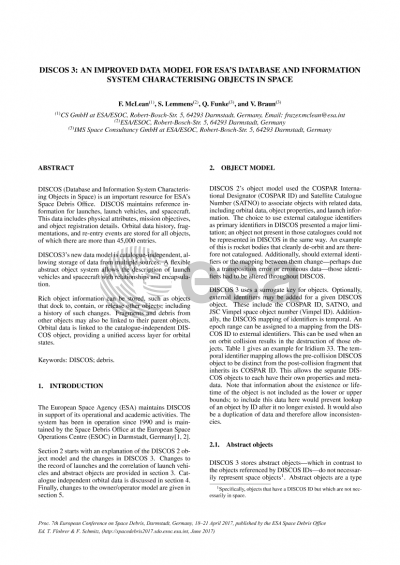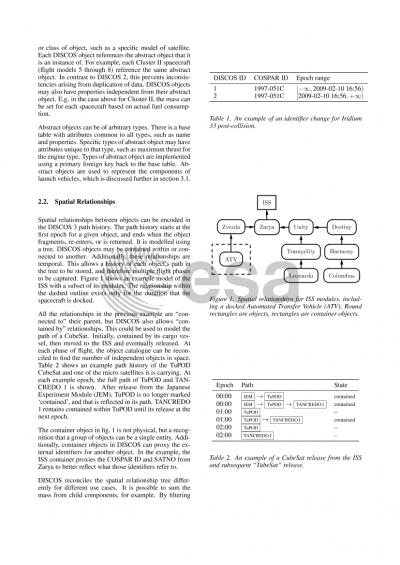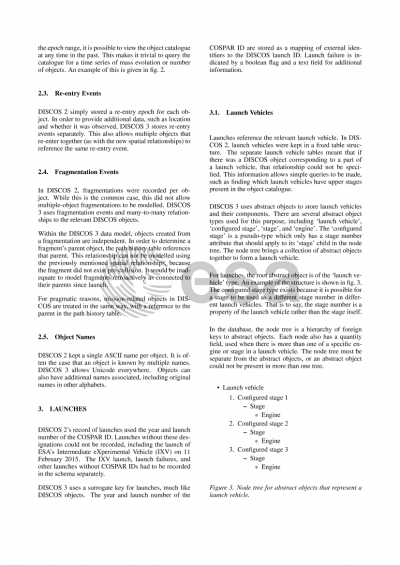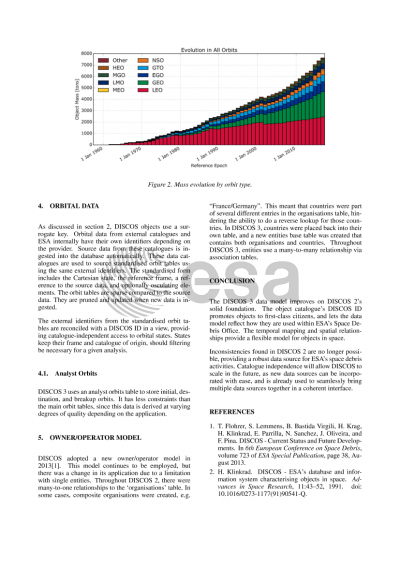Document details

Abstract
DISCOS (Database and Information System Characterising Objects in Space) is an important resource for ESA’s Space Debris Office. DISCOS maintains reference information for launches, launch vehicles, and spacecraft. This data includes physical attributes, mission objectives, and object registration details. Orbital data history, fragmentations, and re-entry events are stored for all trackable objects, of which there are more than 40,000 entries.
DISCOS 3 uses the PostgreSQL relational database management system. Object information now uses a catalogue-independent system, thus providing the basis for DISCOS to contain data from multiple catalogues, and additionally objects that were never tracked such as those with short lifetimes. A flexible abstract object system has been developed to allow the description of launch vehicles and spacecraft with relationships and encapsulation. In addition, stored object information is linked to known abstract objects such as a specific type of upper stage.
The new DISCOS data model allows rich object information to be stored, such as objects that dock to, contain, or release other objects; including a history of such changes. Fragments and debris from other objects may also be linked to their parent objects. This method of storing object location allows an accurate representation of when an object existed in space. Identifiers for different object catalogues is maintained as a history, thus allowing those identifiers to change without affecting the DISCOS object structure. Orbital data from JSC Vimpel and Space-Track are stored for all tracked objects. Orbital states from catalogues is linked to the catalogue-independent DISCOS object, thus providing a unified access layer for retrieving those states.
This paper will introduce the new data model and give an overview of the use cases for the outlined features.
Preview





